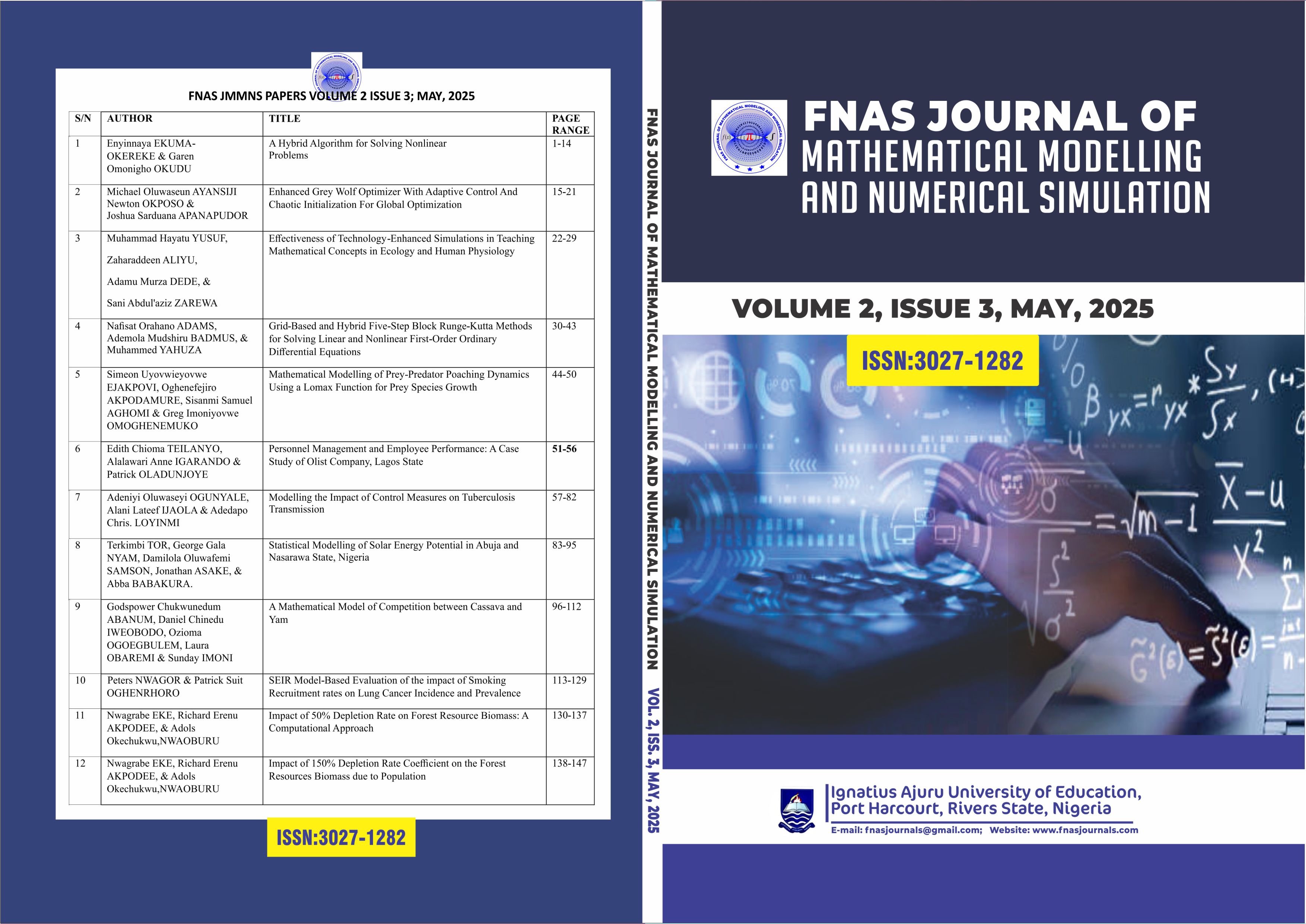Impact of 150% Depletion Rate Coefficient on The Forest Resources Biomass due to Population
DOI:
https://doi.org/10.63561/jmns.v2i3.871Keywords:
Anthropogenic Activities, Forest Biodiversity, Deforestation, Habitat Fragmentation, Climate Change, ConservationAbstract
Anthropogenic activities considerably impact forest biodiversity. Disturbances such as deforestation (clearing forests for agriculture, urbanization, and logging), habitat fragmentation (breaking up of forests into smaller, isolated areas) and climate change (altering temperature and precipitation patterns), significantly impact forest biodiversity. This study examines the effect of 150% depletion rate coefficient of the forest resources biomass due to population. Our analysis reveals that anthropogenic activities lead to loss of habitat (reducing available space for species), reduced species richness/ decline (decreasing population size which drives species into extinction), and altered ecosystem functioning by altering nutrient cycling, pollination and seed dispersal. The consequences of these include: Loss of ecosystem services: which impacts on water regulation and soil conservation; Decreased resilience (making forests more vulnerable to disturbances). We discuss the implications of these findings for conservation efforts and sustainable forest management, highlighting the need for integrated approaches to mitigate the impact of human activities on forest biodiversity.
References
Akpodee, R. E. (2019). Semi-Stochastic Analysis of Environmental Variables Using Numerical Methods on a System of Second Order Ordinary Differential Equations. A PhD Thesis Submitted to the Department of Mathematics, Rivers State University, Port Harcourt, Nigeria.
Akpodee, R. E., & Ekaka-a, E. N. (2019). The Effect of Random Environmental Perturbation on the Bifurcation Interval and the Type of Stability of two Interacting Environmental Variables Using a Second Order Ordinary Differential Equations. MPRI-JERT, International Journal of Engineering and Research Technology. 10(5). ISSN: 1074 – 4741
Eguiguren, P., Fischer, R., & Günter, S. (2019). Degradation of ecosystem services and deforestation in landscapes with and without Incentive-Based Forest Conservation in the Ecuadorian Amazon. Forests, 10(442): 1 – 26. DOI: https://doi.org/10.3390/f10050442
Ekaka-a, E. N. (2009). Computational and mathematical modelling of plant species interactions in a harsh climate, PhD Thesis, Department of Mathematics, TheUniversity of Liverpool and University of Chester, United Kingdom.
Mbakwe, R. C. (1996). The process of deforestation in Nigeria and its ecological consequences. In Proceedings of the Annual Conference of Forestry Association of Nigeria, Minna Niger State.
Mohammed, A. S. (2014). Deforestation and its effect on livelihood patterns of forest fringe Communities in the Asunafo North Municipality. A thesis submitted to the school of Graduate studies, Kwame Nkrumah University of Science and Technology, in partial fulfilment of the requirements for the award of Master of Science in Development Policy and Planning at the Department of Planning, College of Architecture and
Planning.
Ramdhani, V., Jaharuddin, &Nugrahani, E. H. (2015). Dynamical system of modelling the depletion of forestry resources due to crowding by industrialization. Applied Mathematical Sciences, 9(82): 4067 – 4079. DOI: https://doi.org/10.12988/ams.2015.53259
Sale, F. A., &Agbidye, F. S. (2011). Impact of human activities on the forest and their effects on climate change. Australian Journal of Basic and Applied Sciences, 5(8):863 – 867.
Shukla, J. B., Freedman, H. I., Pal, V. N., Misra,, O. P. Agarwal, M., & Shukla, A. (2014). Degradation and subsequent regeneration of a forestry resource: a mathematical model. Ecological Modelling. 87.


